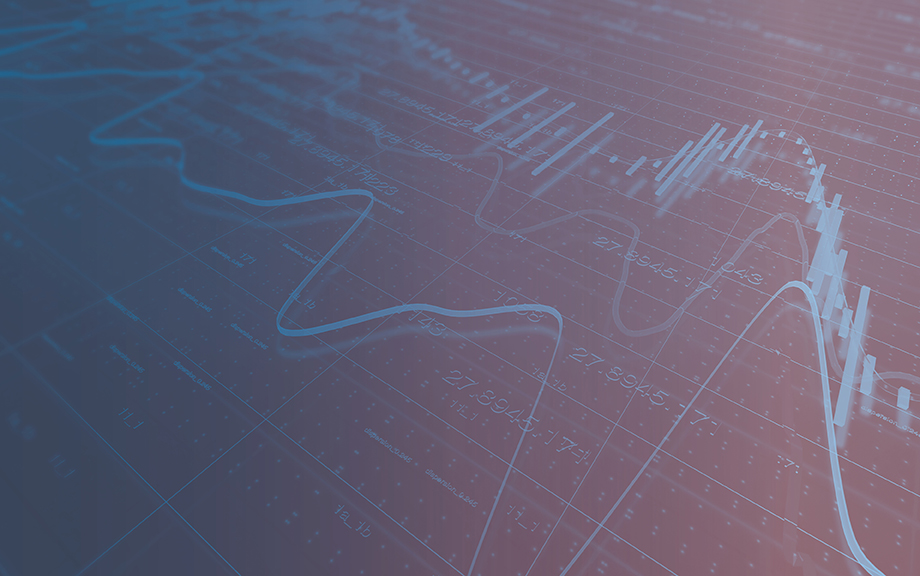The New York Fed DSGE Model Forecast—June 2025

This post presents an update of the economic forecasts generated by the Federal Reserve Bank of New York’s dynamic stochastic general equilibrium (DSGE) model. We describe our forecast and its change since March 2025. To summarize, the model points to a marked weakening in real GDP growth across the forecast horizon (with downward revisions relative to March), driven by weaker-than-expected Q1 data and the anticipated effects of tariff-related markup shocks. The core PCE inflation forecast has been revised significantly higher in the near term, with moderate upward adjustments in later years, reflecting persistent cost pressures. The real natural rate of interest has been revised slightly downward across the forecast horizon, reflecting weaker economic fundamentals.
Monetary Policy Spillovers and the Role of the Dollar

In the literature on monetary policy spillovers considered in the two previous posts, countries that would otherwise operate independently are connected to one another through bilateral trade relationships, and it is assumed that there are no frictions in currency, financial, and asset markets. But what if we introduce a number of real-world complexities, such as a dominant global currency and tight linkages across international capital markets? Given these additional factors, is it still possible to draw generalized conclusions about international policy spillovers—and can we still think of them as a fundamentally bilateral phenomenon? In our third and final post, we explore these questions by focusing on two key elements in the determination of international policy spillovers: the U.S. dollar and the Global Financial Cycle.
How Household Saving Affects Monetary Policy Spillovers

As covered in the first post in this series, the international transmission of monetary policy shocks features positive output spillovers when the so-called expenditure-switching effect is sufficiently large. Departing from textbook analysis, this post zooms in on the implications of differences across market participants with respect to their consumption preferences and ability to insure against income risk. The key message is that these features can, at least theoretically, change the impact of spillovers from positive to negative as well as alter their overall magnitude. These aspects of the international transmission mechanism are especially relevant when addressing spillovers from advanced to emerging economies.
Monetary Policy Spillovers in the Global Economy

Understanding cross-border interdependencies and inspecting the international transmission mechanism of policy shocks is the raison d’être of open-economy macroeconomics as an intellectual discipline. The relevance for the policy debate is pervasive: over and over in the history of the international monetary system national policymakers have pointed at — and voiced concerns about—the effects of policy actions undertaken in foreign countries on the outlook and financial conditions in their own domestic economies. The most recent example involves the spillovers of tighter monetary policies aimed at addressing the inflationary spikes associated with the COVID-19 pandemic. In this three-part series, we provide a non-technical introduction to the multifaceted literature on global spillovers, building in particular on our own research. This post introduces the subject and offers an overview of the classic transmission channels.
The New York Fed DSGE Model Forecast— September 2023

This post presents an update of the economic forecasts generated by the Federal Reserve Bank of New York’s dynamic stochastic general equilibrium (DSGE) model. We describe very briefly our forecast and its change since June 2023. As usual, we wish to remind our readers that the DSGE model forecast is not an official New York Fed forecast, but only an input to the Research staff’s overall forecasting process. For more information about the model and variables discussed here, see our DSGE model Q & A.
The Evolution of Short‑Run r* after the Pandemic

This post discusses the evolution of the short-run natural rate of interest, or short-run r*, over the past year and a half according to the New York Fed DSGE model, and the implications of this evolution for inflation and output projections. We show that, from the model’s perspective, short-run r* has increased notably over the past year, to some extent outpacing the large increase in the policy rate. One implication of these findings is that the drag on the economy from recent monetary policy tightening may have been limited, rationalizing why economic conditions have remained relatively buoyant so far despite the elevated level of interest rates.
The Credibility of Government Policies: Conference in Honor of Guillermo Calvo

Guillermo Calvo is a leading member of a group of economists who revolutionized macroeconomics by modeling how incentives and the anticipation of future policies affect aggregate outcomes. In celebration of his work, a conference was held in his honor at the Federal Reserve Bank of New York and at Columbia University on February 22-24, 2023. The conference program can be found on the event website. A longer version of this post with additional detail on the proceedings can be found here.
Financial Vulnerability and Macroeconomic Fragility

What is the effect of a hike in interest rates on the economy? Building on recent research, we argue in this post that the answer to this question very much depends on how vulnerable the financial system is. We measure financial vulnerability using a novel concept—the financial stability interest rate r** (or “r-double-star”)—and show that, empirically, the economy is more sensitive to shocks when the gap between r** and current real rates is small or negative.
The Dollar’s Imperial Circle

The importance of the U.S. dollar in the context of the international monetary system has been examined and studied extensively. In this post, we argue that the dollar is not only the dominant global currency but also a key variable affecting global economic conditions. We describe the mechanism through which the dollar acts as a procyclical force, generating what we dub the “Dollar’s Imperial Circle,” where swings in the dollar govern global macro developments.
The New York Fed DSGE Model Forecast—September 2022

This post presents an update of the economic forecasts generated by the Federal Reserve Bank of New York’s dynamic stochastic general equilibrium (DSGE) model. We describe very briefly our forecast and its change since June 2022.










 RSS Feed
RSS Feed Follow Liberty Street Economics
Follow Liberty Street Economics